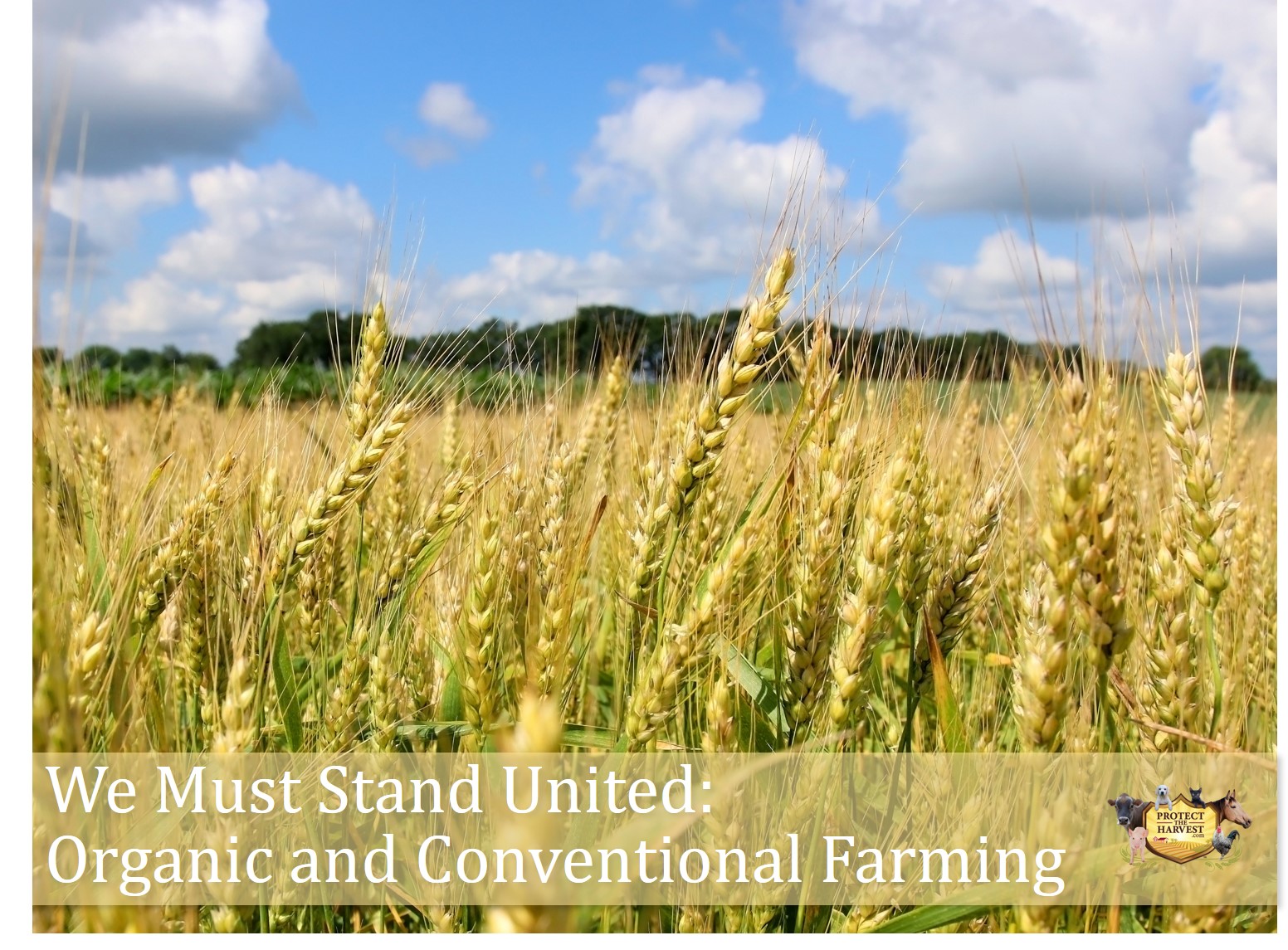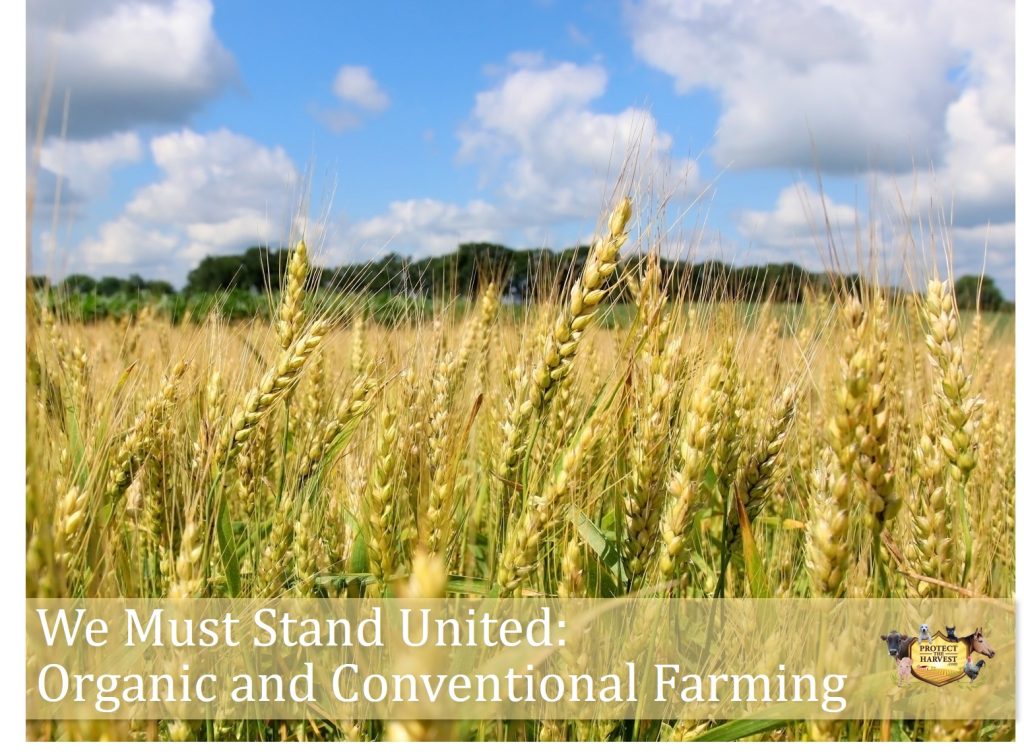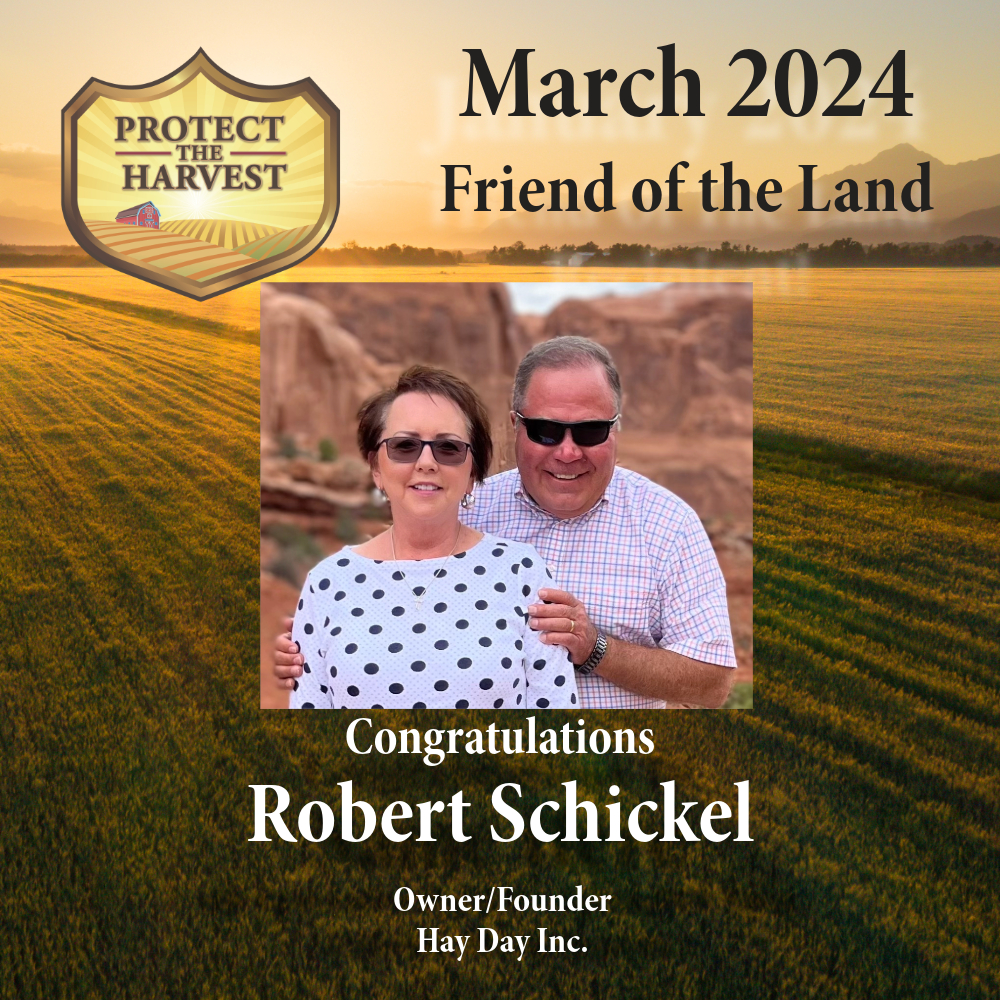
WE MUST STAND UNITED – ORGANIC AND CONVENTIONAL FARMING
How Are NGOs Impacting Agriculture?
Animal extremist and other nongovernmental groups have progressively targeted many areas of agriculture for decades. These groups are aiming to end all animal agriculture and they villainize large modern farms. They are doing this in increments, one step at a time. What will happen if they continue unchecked and reach their goal?
Animal extremist and other non-governmental organizations rely on a “divide and conquer” technique to push their agenda. These groups are implementing a multi-prong approach by:
• Pushing out misinformation to the general public;
• Instigating dissent within different agriculture industry groups;
• Writing, funding and marketing anti-agriculture legislation.
When attacked by animal extremists or organizations, it is natural to want to distance yourself from their target. However, dividing our industry between conventional or organic, small versus large, or those who raise animals for food and those who don’t, harms agriculture as a whole. If activists see that those within the agriculture industry are pointing fingers at one another, then it gives them even more leverage from which to push their agenda.
Our population is growing rapidly and the idea of cutting out huge sectors of our food producers is frightening. This kind of thinking not only eliminates choices for consumers but also drives up the cost of food, especially if there were a shortage. In fact, over 800 million people in the world, struggle with hunger every day. Roughly 1 billion people in the world are classified as food insecure, which means they have insufficient access to affordable, nutritious food. We cannot afford to allow an “elitist” minority to control where our country’s food comes from. We, as an organization, believe that all Americans are entitled to safe, nutritious, and affordable food whether it is grown conventionally or organically.
Conventional Farming
According to the US Department of Agriculture, conventional farming can vary from farm to farm throughout the country, but its main goal is to utilize the most recent technology to produce the highest yield. The USDA explains that conventional farms have characteristics like the use of rapid technological innovation; uniform high-yield hybrid crops; use of pesticides, fertilizers, and external energy inputs; high labor efficiency; and dependency on agribusiness. This is important when our earth’s population is expected to hit 10 billion by 2050. We need to produce over 100 percent more food to keep our growing population fed.
Although conventional farming allows inputs like antibiotic use, to treat sickness within the animal, or hormone synchronization technology, it does not mean that they will be eaten by the consumer. The USDA has strict guidelines to ensure that when animal products are processed, any medications that might have been administered have cleared their system. So, it is not a concern once the meat reaches grocery stores or your plate.
According to the Food Safety and Inspection Service, which is a regulatory agency within the United States Department of Agriculture, “An FDA-approved withdrawal period is observed before the food animals go to slaughter and products from these animals enter the food supply. This is known as the ‘withdrawal time.’ Withdrawal times reflect the amount of time necessary for animal tissue to process a drug so that the amount remaining in the tissues has decreased to a safe level. Every FDA-approved drug for food animals has a withdrawal time printed on the product label. Additionally, withdrawal time charts for different species and antibiotics are widely available from producer groups and cooperative agricultural extension websites. To ensure compliance with these guidelines and provide confidence in the food supply, each year, FSIS tests thousands of meat, poultry and egg products under the U.S. National Residue Program (NRP).”
To find more information about the USDA guidelines in regards to food safety: https://www.fsis.usda.gov/wps/wcm/connect/22dd2ec9-2e85-46f8-8d81-32456616fbbf/QandA2018.pdf?MOD=AJPERES
https://foodinsight.org/fact-sheet-fdas-approval-process-for-food-animal-antibiotics/
https://foodinsight.org/questions-and-answers-animal-antibiotics-antimicrobial-resistance-and-impact-on-food-safety/
Organic Farming
Products that are deemed “certified organic” are available to any and all who prefer them, but it is important to note that there is no significant difference in the safety or nutritional content of the product whether it’s produced organically or conventionally. The Texas Academy of Nutrition and Dietetics explains that “…both conventional and organic farmers use pesticides approved by their respective guidelines. Both organic and conventional products are regulated to ensure the consumer is safe.”
Although there are herbicides and pesticides that organic farmers and ranchers cannot utilize, there is a list of products that organic producers can and do use. Some of the commonly used herbicides and pesticides used in organic production include:
– Copper sulfate
– Soap-based herbicides
– Peracetic Acid
– Chlorine materials like Calcium hypochlorite or Chlorine dioxide
– Ferric phosphate
– Elemental sulfur
– Potassium bicarbonate
The full list can be found here: https://www.ecfr.gov/cgi-bin/text-idx?c=ecfr&SID=9874504b6f1025eb0e6b67cadf9d3b40&rgn=div6&view=text&node=7:3.1.1.9.32.7&idno=7#sg7.3.205.g.sg0
Farms that operate under the regulations of the National Organic Program (NOP) must not use conventional pesticides, petroleum-based fertilizers, sludge-based fertilizers, herbicides, genetic engineering (biotechnology), antibiotics, growth hormones, or irradiation. Animals raised on an organic operation must not be fed antibiotics or growth hormones, be fed 100% organic feed, and must be provided access to the outdoors.
Farmers Want to Produce a Superior Product. Period.
Whether the farmer or rancher raises their plants or animals organically or conventionally, they are striving to produce the best product they can. Often, folks within the ag industry were born and raised into it. This means that they are not only continuing a family legacy but are making a name for themselves as well. Generations of pride and hard work goes into every ear of corn, or every head of lettuce, or every porkchop produced.
What Can We Do To Support All Agriculture
It is our duty as agronomists, farmers, ranchers, scientists, inspectors, technicians, etc. involved in the agriculture industry to educate those who are not. We are the ones with often a lifetime of knowledge to share. By sharing truthful and factual information about our work, we open up an opportunity for positive dialogue about it. It is important to stand up to those who speak out against agricultural industries in a respectful, yet persistent way. We need to make up for the years that went by when we said nothing; often claiming “they don’t know what they are talking about, it won’t affect us”. The time has come that it will affect you, or your neighbor, or your friend.
You can help support all forms of agriculture by:
– Attend agriculturally focused events
– Discuss agriculture with your friends and family
– Use social media as a platform to share positive information and engage in positive conversations about it
– Donate to Ag-related organizations
– Support legislation that benefits farmers and ranchers
– Oppose legislation that hinders animal ownership, farming, or animal agriculture
Beyond all of the ways to support agriculture outlined above, one of the most important ways we can support all agriculture is to not partake in fear-based marketing strategies.
Those may include:
– “Non-GMO” labels on food that is not an approved genetically modified product (there are only 10 in the U.S.: alfalfa, apples, canola, corn (field and sweet), cotton, papaya, potatoes, soybeans, squash and sugar beets).
– “All Natural”, an ambiguous term that can make consumers think the other brands “are not natural”.
– “Hormone-free” or “Steroid-free”, no hormones or steroids are used in the production of poultry or pork as mandated by the FDA.
– “Antibiotic-free”, no meat ever has antibiotics in it by the time it is processed or consumed due to the regulations and withdrawal period outlined above.
– “Humanely raised” labeling on some of the local/boutique farming operations imply that other farming practices do not treat their animals humanely. The size of the farm or ranch does not indicate the treatment of the animals, animal welfare is and should be the highest priority to farms of all sizes.
Staying away from using these tactics offers a more unified front in order to combat the misinformation that swirls around our food and agriculture industries. A better way to market your products is to share their benefits, their nutritional content, and what the food can provide to the consumer.
Stand Together on Behalf of the Ag Industry
Protect The Harvest has urged our followers time and again to stand together on behalf of the agriculture industry. We have warned previously that we are quietly losing our ability to provide affordable food for our nation. Farming and ranching are under attack in the United States, and so are your rights to feed your family. Extremist groups are working to control farming, ranching, land use, water use and to restrict animal ownership. Being united against the misinformation, or lack thereof, of the practices that produce the world’s food and fiber will allow the industry to stay strong. Thomas Jefferson had it right when he said: “Agriculture is our wisest pursuit, because it will in the end contribute most to real wealth, good morals, and happiness.”




